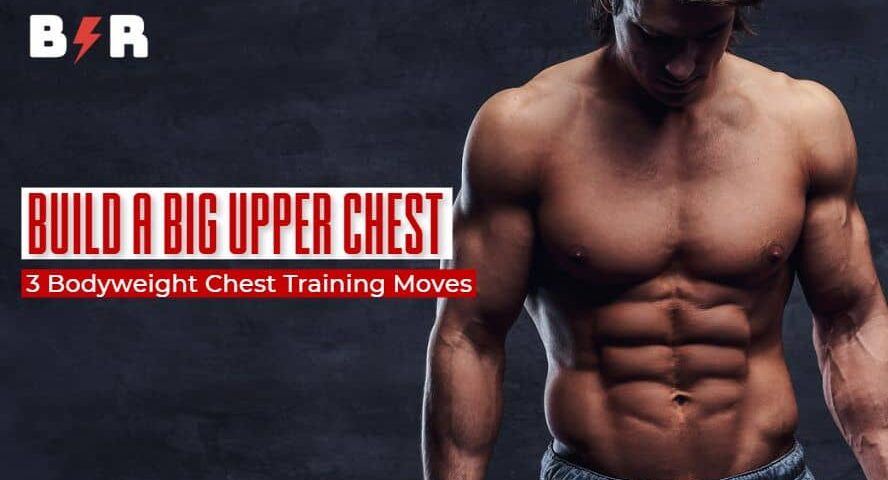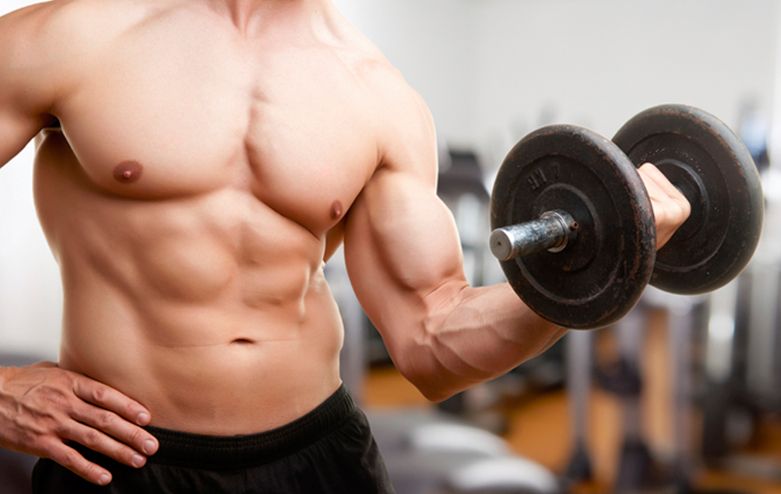- Have any questions?
- hello@bigandripped.com
Get Ripped with Upper Chest Exercises | 3 Best Moves

Need help adding muscle to your upper chest?
Table of Contents
If you want to build a big upper chest, you need to make sure that you’re going to focus on it specifically.
When you do a push-up, especially as it’s bodyweight training, you won’t be isolating any part of your musculature. This means you’ll be involving all sorts of muscle groups including triceps, deltoids and abs.
If you only do this, you’ll find that your lower pecs start to take over and this can result in a bottom-heavy look that’s a little too breast-like for most guys’ tastes.
If that’s what you’re into, then go ahead!
Conversely, if you train the upper pecs, you can create that really great ‘shelf’ look along the top of your chest, just below your collarbone.
So you need to really isolate that upper chest.
But… how do you do this with bodyweight training?
Revealed in this video!!!
The Secret to Building a Big Upper Chest with Bodyweight Training
The secret here is to change the angle of your press-ups, just as you would change the angle of your bench press with an incline bench press.
Ideally, you want your body to be at about 45 degrees so that you are essentially pointing diagonally down towards the floor.
As you press up and down, you should be taking your face closer and further from the ground with each repetition.
This might sound like fairly obvious advice, but if you work out mainly at home ask yourself how often you do this.
Many of us will sometimes work our shoulders with a steeper angle and of course, we work the pecs generally with a flat angle…
But how often do you do this diagonal pose?
This is important because if you were in the gym, you would be focussing on your upper chest in a lot of different moves.
So you need to incorporate it here!

3 Best Moves to Build Upper Chest
Here are 3 upper chest moves you can use that will do just that.
- Assisted handstand push up
- Hindu push-up
- Lateral-assisted handstand push up
#1: Assisted Handstand Push Up
This is simply a handstand push-up with your legs leaning against something.
Of course, the higher you lean the legs, the more this will move onto the shoulders and vice versa.
Below are the steps to help you perform assisted handstand push-ups:
- Find a sturdy and stable object to use as support, such as a wall or a weight bench.
- Stand facing the support with your hands on the ground about shoulder-width apart.
- Kick your feet up and place them against the support so that your body is in a handstand position.
- Slowly lower your head towards the ground by bending your elbows. Keep your core tight and your back straight.
- Once your head touches the ground, push back up to the starting position, keeping your arms straight.
- Repeat for the desired number of repetitions.
Pro Tips: A great strategy is to gradually lower the legs each time you fail, creating a mechanical drop set as you do.
#2: Hindu Push Up
This push essentially goes straight from a downward position and upwards into a salute to the sun-style pose.
Follow the instructions to properly perform the exercise:
- Start in a press-up position with your hands a little closer to your feet and your head pointing down.
- Now, dive down as though you’re going to face plant and then swoop up at the last minute. This works the upper chest but also the lower chest, isolating both and getting all those pushing muscles to work in coordination.
Indeed, Hindu Push-ups are great moves and a perfect exercise to build a big upper chest with bodyweight training, especially for defining the pecs.
#3: Lateral-Assisted Handstand Push Up
The lateral assisted handstand push-up is a variation of the traditional handstand push-up that targets the shoulders, triceps, and core.
In this form, you’ll be coming down more on one side and then the other. This isolates one pec and makes a move much harder.
Moreover, you can perform lateral assisted handstand push-ups by following the steps of assisted handstand push-ups.
Professionals say that if you’re new to lateral handstand push-ups, you should start with a partial range of motion and work your way to a full.
You can also modify the exercise by using a resistance band or having a spotter (professional trainer) assist you.
Hence, these are the best exercise to build a big upper chest with bodyweight training.
NOTE: Always warm up before performing these exercises, and listen to your body if you experience any discomfort or pain.
In short, don’t try to overdo or push your limits to an extent to avoid injury.
Conclusion
Building a big upper chest with bodyweight training can be challenging but is possible with the perfect exercises and approach.
By incorporating the three chest moves (mentioned above) into your chest workout routine, you can effectively target and strengthen your upper chest muscles, even without any gym equipment.
Moreover, to maximize your results, performing each exercise with the proper form and technique is important.
Professional advice to gradually increase the number of reps and sets as you progress and maintain a balanced diet and perfect rest schedule to support muscle growth and recovery.
Furthermore, consistency is the key to success. By staying consistent with your training, you can achieve your goals and improve your overall fitness and physique.


1 Comment
Well I truly enjoyed studying it. This tip provided by you is very useful for correct planning.